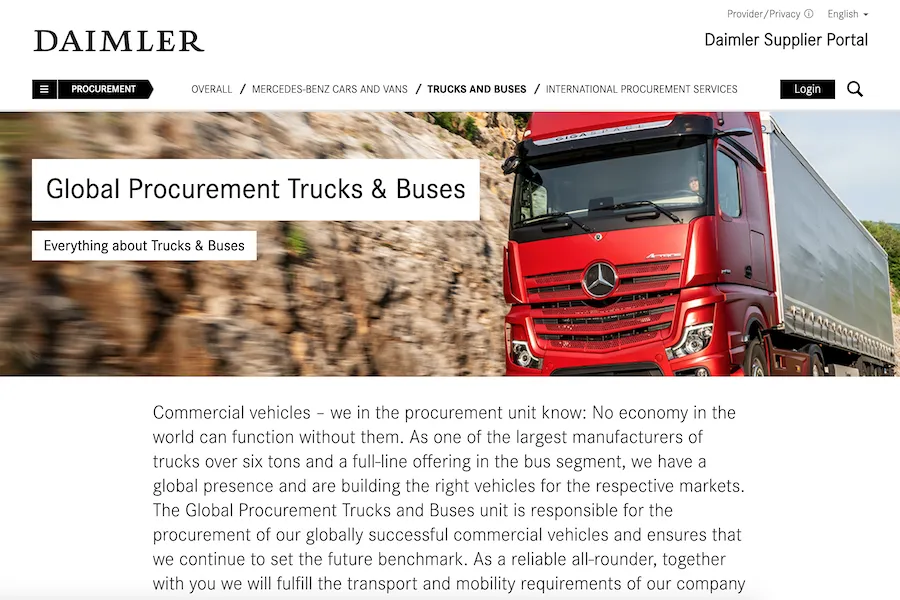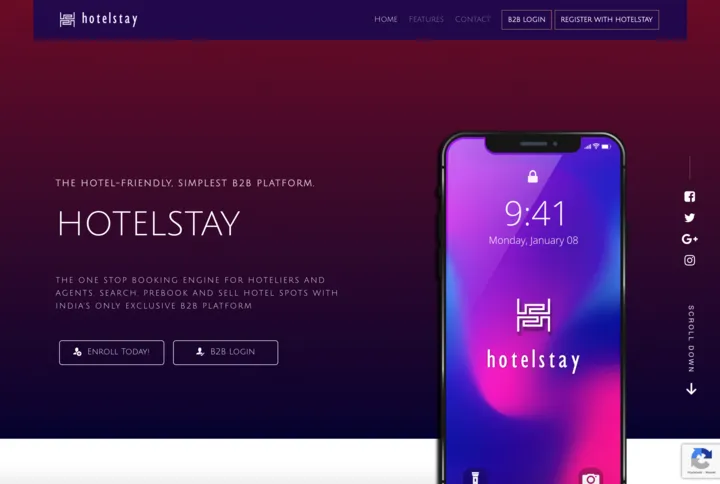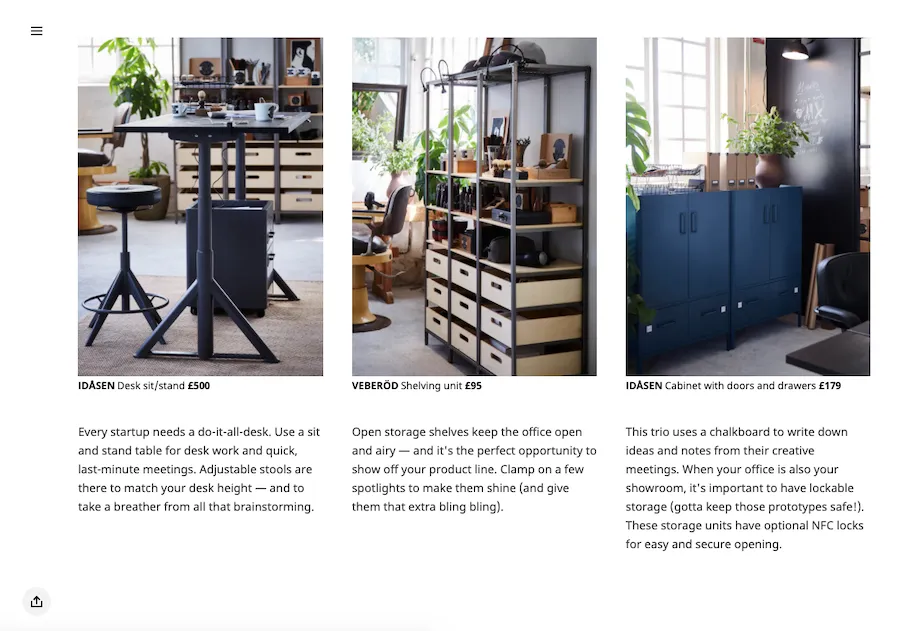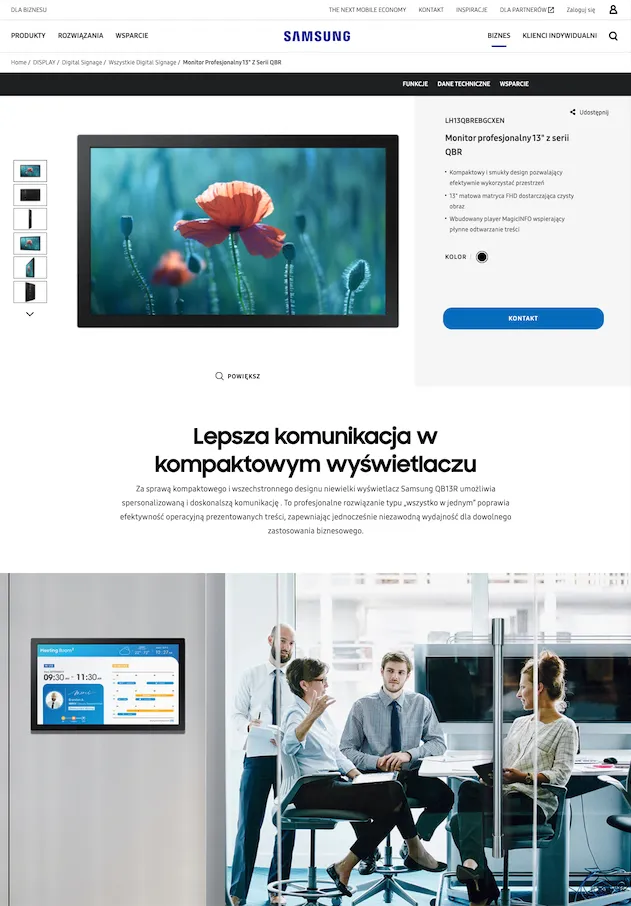If you've read our previous article about customer segmentation in B2B sales, you know perfectly well how crucial adequate segmentation and navigation of users on B2B platforms are.
In today's article, we'll look closely at one of the most important elements influencing conversion — product description.
It is worth emphasizing right away that a good product description in most industries determines the final purchasing decision. Sales and product descriptions definitely depend on each other.
To create an effective sales offer, you need to use language appropriately. For example, product descriptions for E-Commerce are like test drives for a car dealership.
However, before we move to the discussion of this problem, first, we have to present you with the issue of differences in the nature of online shopping and using B2B platforms.
With no knowledge of these differences, you won't be able to fully understand the business client's needs, objectives, and expectations.
While both B2B (business to business) and B2C (business to client) are about orders and sales, they significantly differ. And not just in details.
B2B platform — the character of the sales offer
Without understanding the nature of B2B E-Commerce, you won't be able to create an effective sales platform.
A platform that would meet diverse expectations regarding information (e.g., on price, technical specification), functions (e.g., calculators, wizards, configurations), and emotions (e.g., trust, post-sale satisfaction).
It's definitely a game worth playing. The available statistics ensure that the trend of the increasing share of purchases through B2B platforms will continue.
A B2B sales platform that is growing and investing in this channel will be able to increase not only orders and sales but also the volume of customers.
B2B platforms are increasingly becoming a main sales and purchasing channel. They also enable you to build solid relationships and increase customer loyalty.
A B2B system and its customers
Creating a B2B platform also consist of establishing solid business relationships. Hence, it's worth knowing who your customers are. What type of E-Commerce platform is attractive to them in terms of functionality.
Increasingly often, people belonging to the generation of millennials are becoming responsible for purchases. It's a group for which buying in an online store or using a multifunctional platform is highly natural.
The technical competencies of its members are much higher, and therefore their expectations are also much higher.
Until now, the prevailing belief has been that individual price lists are the only thing business customers want. That it is the only tool needed for effective sales and finalizing an order. That's not true.
Above all, the business customer expects a combination of factors relevant to a face-to-face relationship and those specific to selling through a B2B platform.
At the top of their hierarchy of needs will be trust, authentic understanding of needs, certainty, reliability, and modernity.
Understood in a technological and organizational way. More and more people want to benefit from such an offer.
Business customers don't put tradition over modernity or modernity over tradition. They want to order, exchange, and service in a convenient, handy, quick, and seamless way. However, digital solutions offered to them need to be safe, easy to use, and reliable.
Especially considering that orders and the purchasing decisions behind them influence the professional status of the decision-makers and the functioning of entire departments and companies. Increasing sales must begin with understanding the needs and risks of customers.

A recipient of the product description or who is this platform supposed to be for?
Here we arrive at the subsequent significant issue that should be taken into account when creating the product description on a B2B platform, namely the recipient of this description.
In the case of B2C, there is usually one buyer and one decision-maker. When selling products through a B2B platform, you must deal with a matrix of roles, positions, decision scopes, and business forms.
Among customers of B2B platforms, you can find corporations, joint-stock companies, limited liability companies, and small and medium-sized companies. These can be manufacturing facilities, wholesalers, and distributors.
It's rare for purchasing decisions to be made by one person.
Usually, it's a group of people from various levels of organizational structure. That is characterized by different needs, experiences, habits, and competencies.
Furthermore, the greater number of decision-makers and opinion-makers, the more complex the choice and the longer the decision-making process. Thus, the product description should take into account various needs — at the level of industries, people, function as well as departments. Simultaneously it needs to avoid the overabundance of data.
Myths about B2B platforms
This situation calls for an in-depth consideration of product descriptions and adapting their content and form to diverse expectations.
Naturally, the business customer is much more informed, however as research shows (e.g., Nielsen Norman Group report "B2B Website Usability for Converting Users into Leads and Customers" 3rd Edition"), they're rarely fully aware of their needs and capabilities of the system they use.
Meeting these needs is the role of the, among others, product description.
Another interesting issue from the abovementioned report is debunking the myth that the customer using a B2B platform makes the purchasing decision only based on the attractiveness of the price.
No less important are the technical specifications of the product, its functionalities, warranty coverage, compatibility with other products and systems, punctual and convenient delivery, available systems and payment methods, after-sales service, and the ability to build solid and attractive conditions supporting a subsequent purchase in the store.
Customer segmentation and a B2B platform
When creating descriptions, you should pay attention to the size of the company, the character of purchasing decisions (it will be different for, e.g., limited liability companies and family-owned companies), expectations regarding norms (e.g., implemented ISO systems), standards, and short-term and long-term demands.
Customer segmentation should be reflected in product descriptions on B2B platforms. With that said individual categories should be highlighted as clearly as possible. They can't overlap or coincide.
The classic division, which considers the size of a company (small, medium, big, corporate), doesn't have to be the most effective in a given industry regarding its sales effectiveness.
The company's needs stem from its size, potential, and scope of operations and from, e.g., current market, legal, technological, and economic situation. We discussed B2B platforms and the influence of customer segmentation on the navigation within the system in the article about B2B sales.
Customization first or how to write a good product description
Product descriptions that take into account or give preference to one category considerably reduce the sales value.
It's all the more important in the current situation in which the main expectations of customers are individualized offerings and data selection. So, how to create a product description that will attract business customers to online stores?
Product descriptions on B2B platforms (that's how they differ from writing descriptions for B2C online stores) should suggest or directly inform about the ability to customize the offer in its key parameters — price, range, volume, repeatability or cyclicality, and time of fulfillment. The ideal solution is the option to negotiate prices depending on crucial variables automatically.
Other information that should be evident from the product description on B2B platforms is the quality-to-price ratio, estimated return on investment, customization, development, or complementarity opportunities with already possessed products and technology.
The latest solution isn't always the best from the perspective of the needs of an online store buyer.

When, how, and where to look for important data for product descriptions?
This is another essential question for the customer, which product description should answer. Just as in B2C E-Commerce, the issues of transportation, delivery, time, and method of delivery of purchased products are also extremely important in B2B platforms.
Or, actually, they are even more critical. Often, the continuity of production depends on the punctuality of deliveries. Creating descriptions means providing helpful information, without which customers remain in a state of uncertainty. And they're increasingly likely to resign from purchasing.
Both B2C online stores and B2B platforms should write product descriptions based on a checklist. Each category should have its own list.
Remember that each product has characteristics that are shared with others, as well as some individual attributes, which should be reflected in its description.
In the case of highly risky and troublesome products or requiring special precautions and delivery conditions, information on the method of transport is critical. It should be an essential part of the description in every store.
The issues of local and international deliveries, insurance, legal requirements, and payments tend to be much more important to the customer than price or a detailed technical specification.
Product description solves problems
One of the most crucial issues that are omitted during the creation of product descriptions for B2B platforms is the awareness that the majority of customers don't look for specific models, technology, systems, generation, norms, or certificates, but they look for information about the solutions of problems.
Problems that the mentioned models and technology can solve. The product description, at least in general, should indicate the scope of problems the product will solve. In other words, it should show whether a given product can fulfill current and future expectations.
If you don't consider these issues, you shouldn't expect an increase in orders.

A product easy to find or a good description of a product
The product description in the online store should also allow customers to seamlessly and quickly find the product with the internal search engine through keywords.
The ideal situation would be if, at the same time, it allowed the product page to be positioned high in search engines.
The system of internal recommendations and indicating analogous, complementary, or supporting products (cross-selling) is undoubtedly equally desirable in the product description, just as the ability to negotiate price through a B2B platform.
Argue — not just reasonably
By knowing what your customer needs, what information they look for, how they make purchasing decisions, and what issues they prioritize (e.g., methods and payment options), you can more reasonably choose the set of arguments compelling to buy.
Right away, it is worth debunking another myth that business buyers are devoid of emotions, aren't guided by them, and make comparisons only regarding the technical parameters of products available on B2B platforms.
How to describe products on a B2B platform?
Simply put, through the language of benefits. Therefore, you should emphasize what positive change the product will bring and what it can guarantee.
Honesty and assurances based on facts (e.g., usability and efficiency tests) is the best way to convince and inspire trust.
You can look at the benefits of the purchase in two ways. The product description should include a positive value (e.g., faster printing) and a negative value (e.g., lower utilization costs). It's hard to find examples of better information.
A formula that can be applied universally allows you to describe any product from the standpoint of its key attributes. Attributes that cause changes and ensure positive and negative values in different time perspectives.
Optimization of time, work, costs, and profits evaluation should be the core of product descriptions on B2B platforms.
It can be a big mistake to overlook aesthetic or ergonomic issues. Such information simply shouldn't be missing.
A product description is the best advisor
While creating descriptions for a B2B store, you shouldn't only be an informant or authority but a helpful and competent consultant or advisor.
The tone of the product description should stem from the professional technical description and language of benefits that is oriented towards recommending, matching, and advising. The description should clearly state what problems the product solves.
From what, how, and for what?
Model descriptions should answer critical questions as reliably and exhaustively as possible, as well as in an interesting way.
Regarding, for example, materials, resources, technology, composition, dimensions, functions, uses, ways of operating, guarantees, compatibility, operation and maintenance conditions, security, norms, certificates, permits, and target groups.
Other issues related to post-purchase technical support and future product development are no less important.

Opt for context, avoid jargon
In general, the product description in the online store should serve to present its attributes in the context of quality of use and benefits of use rather than list the parameters, technical details, or names of models, series, and technology dispassionately.
They're important as long as they're understood by each customer.
Of course, industry jargon serves to build authority and suggests that the B2B platform is professional and trustworthy.
Nevertheless, omitting the benefits of simplicity and semantic accessibility (understanding of terms, acronyms, symbols, or meanings) may make the store perceived as unfriendly.
In particular, in the case of people with different competencies and such people are also sometimes delegated to buy on a B2B platform.
Names of products
The communicativeness of the language used for product descriptions on B2B platforms tends to be the most often discussed issue the users encounter.
It applies just as much to functional and technical descriptions as to the product names themselves, which are sometimes as distinctive as they're anonymous.
A technical name and a commercial name in many industries diverge entirely.
Names of products should be simple and understandable and communicate the product's category and attributes.
Beware of names — they can be misleading!
Here it's worth taking note of a phenomenon that was researched by Nielsen Norman Group and described in the abovementioned report.
Naming schemes (usually alphanumeric) not only don't coincide with the ideas and expectations of customers but may also suggest non-existent features and functions.
Okay, a show of hands. Who never experienced such a situation in an online store? Who never lost trust in the online store because of this?
Although they work fine as keywords, they are somewhat problematic regarding sales. Higher numbers of models may suggest higher quality and price.
This effect is additionally enhanced by product sorting.
For example, products listed first may be perceived as older due to their names.
Summary
- Product descriptions should include complete, reliable, accurate, and verifiable product information.
- This description should allow customers to quickly reach detailed technical specifications, manuals, or terms and conditions regarding warranty and servicing.
- It's also worth uniforming all nomenclature regarding units of measure, labels, and symbols.
- Whenever possible, the product description should always be enriched with technical drawings, instructions, infographics, manuals, and audiovisual tutorials.
- Product descriptions can be enhanced with additional brochures, case studies, FAQ sections, benchmarks, accurate opinions, customer evaluations, maps of availability, and ratings of experts.
- A good product description on a B2B platform should summarize the essential attributes and features that serve to solve specific problems.
- Information on price lists, delivery dates, and terms of order fulfillment — time and size — also should be a significant element of a description that should always be up-to-date.
These are keywords that you should definitely remember. And content that all platforms should take care of.
Don't duplicate content!
Product descriptions aren't only useful for sales. They also should be utilized for promotional purposes and support the range of the B2B platform. Thus, they cannot be plagiarized from content found on competing B2B platforms.
When creating them, you should know how to write an effective product description that should be unique above all else.
Customers of B2B platforms should also be able to see the difference in offers at the description level. Remember, the devil is in the product description.
While creating product descriptions, you should pay attention to their availability, value for users, and the Googlebot that "checks" pages in terms of their uniqueness and the quality of published content.
Duplicating the same content can result in removing subpages with the lowest PageRank from the search engine index.







